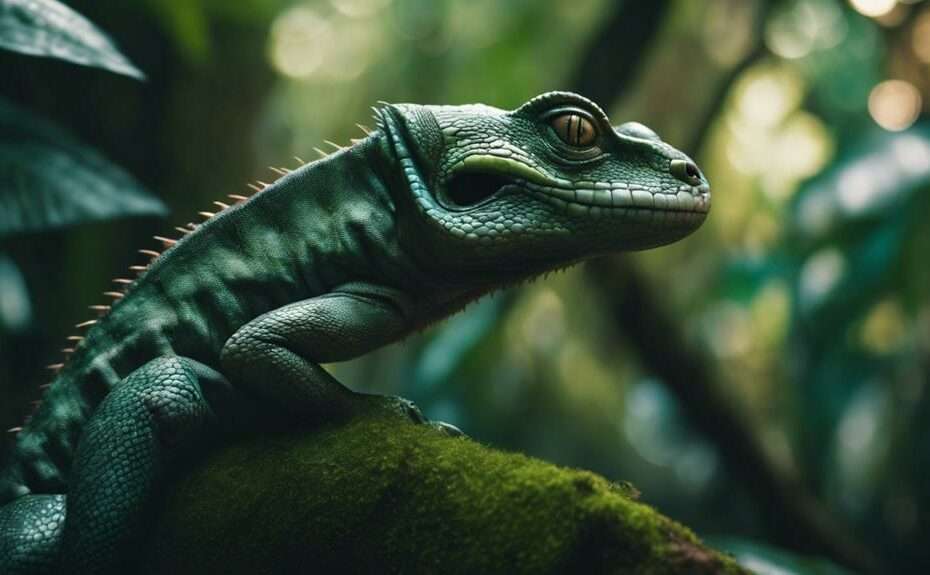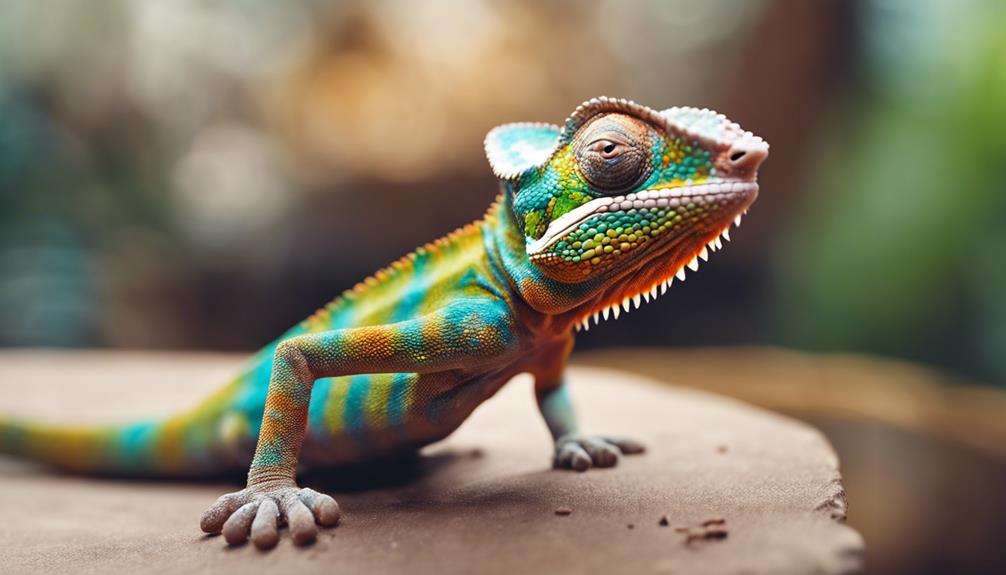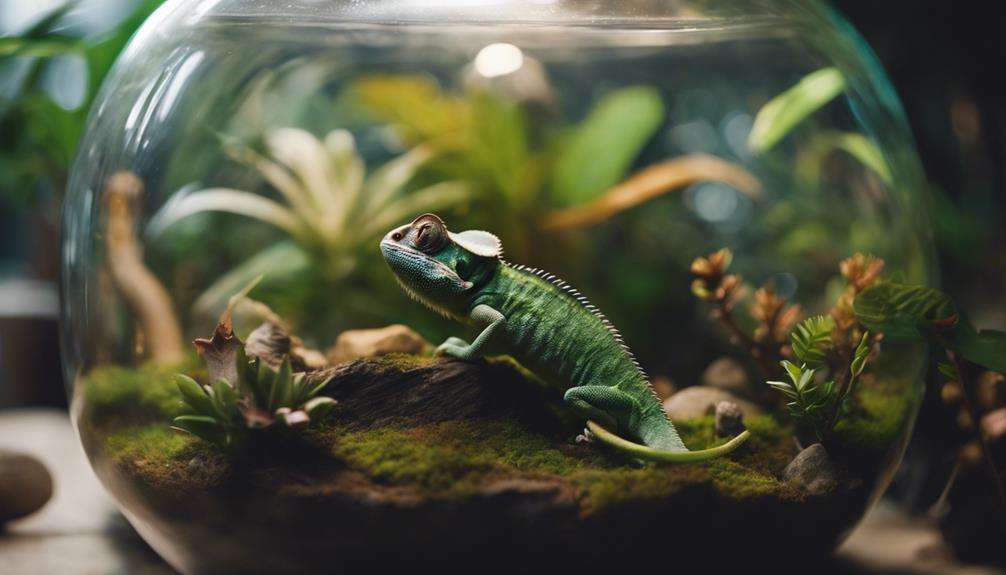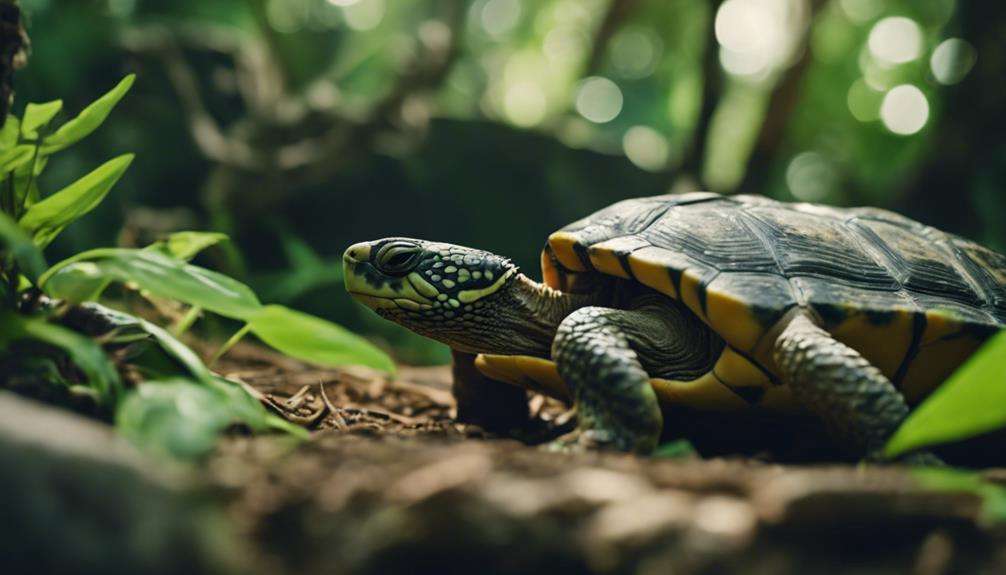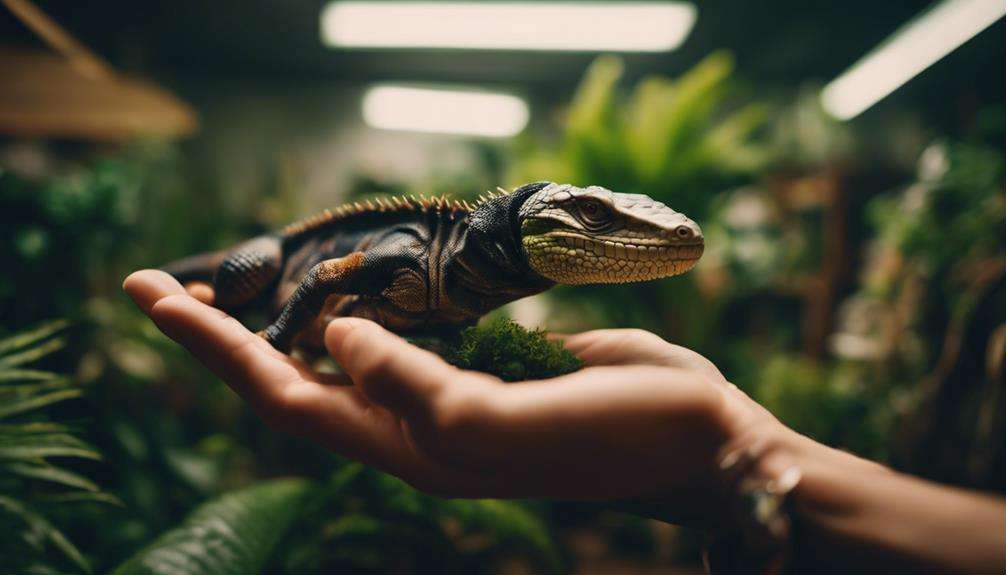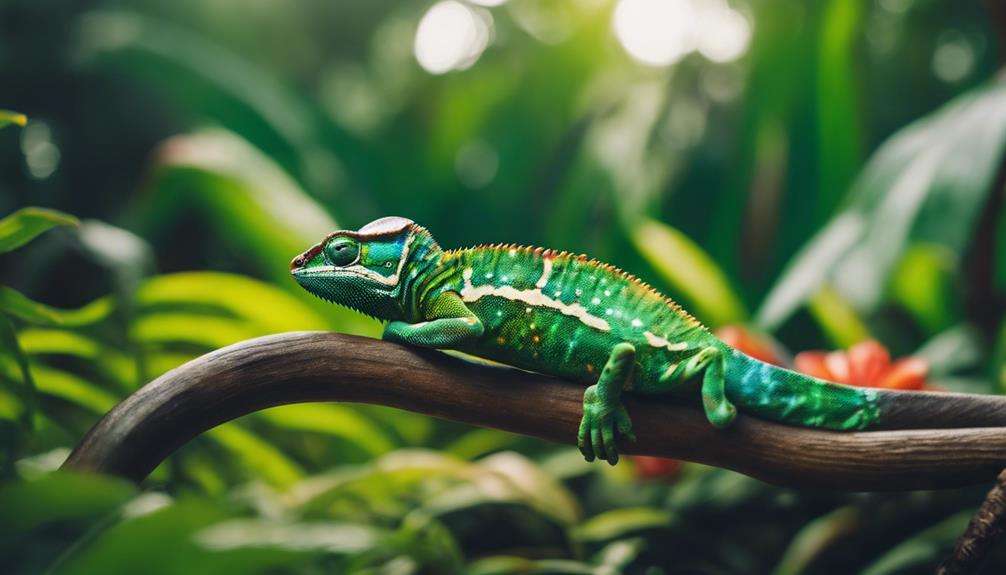Imagine stumbling upon a rare reptile species in a remote rainforest, like the critically endangered Arakan forest turtle. These elusive creatures are not just fascinating to observe but play a crucial role in their habitat's intricate web of life.
While their numbers may be few, the impact they have on their ecosystems is immense. But why exactly are these rare reptiles so essential to their habitats?
Stay tuned to uncover the hidden significance of these unique creatures and why their conservation is paramount for the health of our planet's biodiversity.
Key Takeaways
- Rare reptiles play vital roles in maintaining ecosystem balance and biodiversity.
- They are key components in food webs, controlling populations as top predators.
- Indicators of habitat health, rare reptiles influence ecosystem balance significantly.
- Rare reptiles are crucial for specialized habitat preservation and biodiversity conservation.
Conservation Importance of Rare Reptiles
The conservation of rare reptiles is paramount for maintaining ecosystem balance and biodiversity in their habitats. Rare reptiles play vital roles in their ecosystems, contributing to the overall health and resilience of the environment. These species are often keystone species, meaning their presence has a disproportionate effect on the ecosystem relative to their abundance. Their unique ecological roles can range from being top predators that regulate prey populations to seed dispersers that help maintain plant diversity.
Conservation efforts targeting rare reptiles are crucial not only for safeguarding these species but also for protecting the habitats they rely on. By preserving rare reptiles, we're also conserving the intricate web of interactions they're a part of, including their position in the food chain and their effects on other species. The loss of rare reptiles can disrupt the delicate balance of ecosystems and lead to a decrease in overall biodiversity. Therefore, safeguarding these endangered species is essential for the well-being of the entire ecosystem.
Role of Rare Reptiles in Ecosystems
Playing essential roles in their ecosystems, rare reptiles fulfill unique ecological functions crucial for maintaining biodiversity and ecosystem balance. These reptiles serve as key components in food webs, occupying various trophic levels as both predators and prey. As top predators, they help control the populations of other species, preventing unchecked growth that could disrupt the balance of the ecosystem. Additionally, rare reptiles contribute to seed dispersal and pollination, aiding in the reproduction and distribution of plant species. Their presence also influences habitat structures, shaping the physical environment for other organisms.
Conservation efforts aimed at protecting rare reptiles are vital for safeguarding these intricate ecological relationships. By preserving these species, we ensure the stability of their habitats and promote overall ecosystem health. Furthermore, rare reptiles play a significant role in maintaining genetic diversity within their populations, enhancing their resilience to environmental changes. Studying the ecological role of rare reptiles provides valuable insights into species interactions, ecosystem dynamics, and the interconnectedness of life within their habitats.
Biodiversity Impact of Rare Reptiles
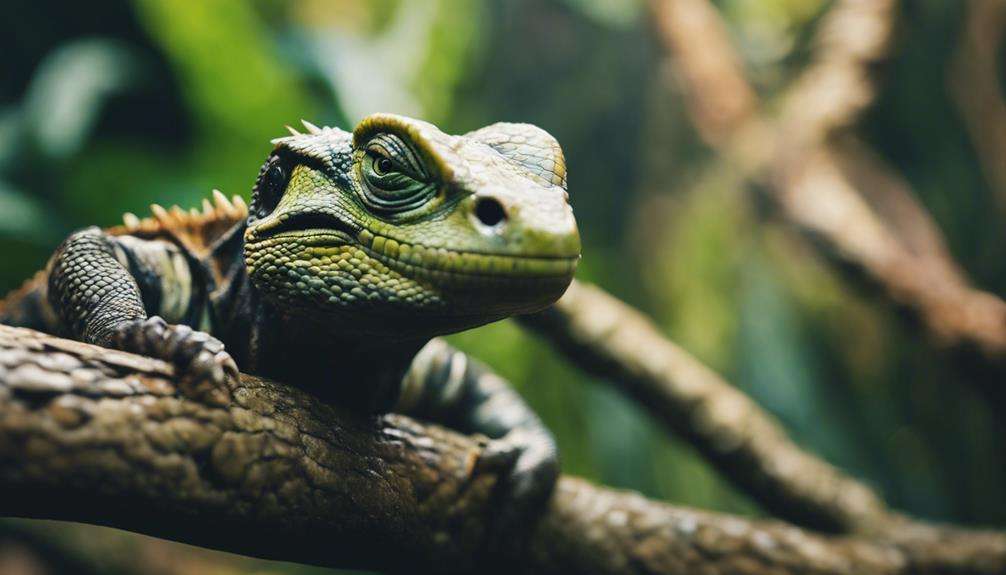
Rare reptiles exert a substantial impact on biodiversity within their respective habitats, influencing ecosystem health through their unique ecological roles. These reptiles play a crucial part in maintaining the balance and functionality of their ecosystems.
Here's how rare reptiles contribute to biodiversity:
- Indicators of Habitat Health: The presence of rare reptiles signifies the overall health and quality of their habitats, making them vital indicators for environmental well-being.
- Specialized Adaptations: Rare reptiles often possess specialized adaptations that enable them to fill specific niche roles within their ecosystems, contributing to the overall biodiversity and functioning of the habitat.
- Conservation Significance: Conservation efforts directed towards rare reptiles are essential for preserving the intricate relationships they've within their habitats. Protecting these species is crucial for maintaining the biodiversity and ecosystem functions that rely on them.
Understanding the biodiversity impact of rare reptiles emphasizes the significance of their conservation for the overall health and sustainability of ecosystems.
Unique Habitats of Rare Reptiles
Inhabiting specialized and unique ecosystems, rare reptiles demonstrate a critical dependency on specific environmental conditions for their survival. Snakes, for example, often rely on particular habitat features such as specific soil types, vegetation cover, and microclimates to thrive. These unique habitats play a crucial role in providing essential resources like food sources and shelter for rare reptiles. Moreover, rare reptiles act as indicators of ecosystem health, with their presence reflecting the preservation of specialized habitats.
Conservation efforts focusing on these ecosystems are paramount for safeguarding rare reptile populations from the brink of extinction. By protecting the habitats that rare reptiles depend on, we can ensure the continuation of their intricate relationships within their ecosystems. Understanding these relationships is key to developing effective conservation strategies that not only benefit rare reptile species but also contribute to the overall health and balance of the ecosystems they inhabit.
Threats to Rare Reptile Populations
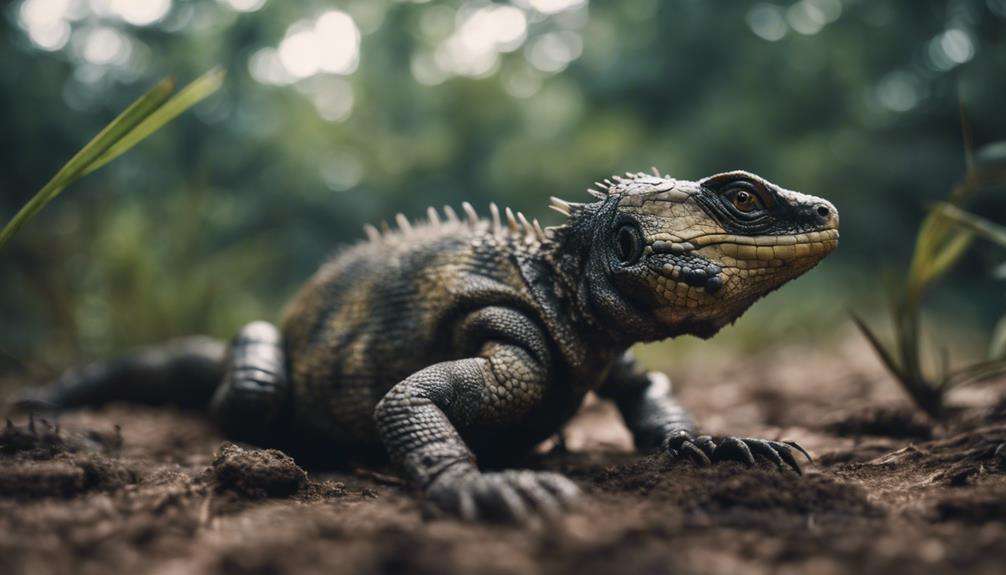
The survival of rare reptile populations is increasingly threatened by various factors, including:
- Habitat Destruction: The clearing of natural habitats for agriculture, urbanization, and infrastructure development leads to the loss and fragmentation of crucial habitats for rare reptiles.
- Illegal Wildlife Trade: Rare reptiles are often targeted for the exotic pet trade, leading to population declines and disrupting ecosystem dynamics.
- Climate Change Impacts: Temperature fluctuations and extreme weather events resulting from climate change can alter habitats, disrupt breeding cycles, and affect the availability of food sources for rare reptiles.
Pollution, invasive species predation, and competition further exacerbate the challenges faced by rare reptile populations. Pesticides, chemicals, and other pollutants can contaminate habitats, affecting both reptiles and their prey. Invasive species can outcompete native reptiles for resources or directly prey on them, further reducing their populations.
Understanding and addressing these threats are crucial for the conservation and preservation of rare reptile species and their habitats.
Frequently Asked Questions
How Are Reptiles Important to the Environment?
Reptiles play vital roles in the environment by enhancing biodiversity benefits, maintaining ecosystem balance, aiding in pest control, supporting seed dispersal, promoting soil health, regulating climate, contributing to wildlife conservation, and influencing food chain interactions.
What Are Some Rare Facts About Reptiles?
You'll be amazed by the South American yellow-footed tortoise's surprising habitat choices. It thrives in a variety of environments, from dense rainforests to dry savannas. This little-known species showcases the adaptability of rare reptiles.
What Would Happen if Reptiles Went Extinct?
If reptiles went extinct, ecosystems would suffer from disruption, loss of biodiversity, imbalances in food chains, increased pest populations, changes in vegetation, and decreased soil quality. Natural balance and nutrient cycles would be disturbed.
What Do All of the Habitats of Reptiles Have in Common?
In reptile habitats, common features include suitable shelter, food sources, water access, and protection from predators. These elements support biodiversity, ecosystem balance, climate regulation, food chains, genetic diversity, adaptation strategies, reproduction, and survival techniques.
Conclusion
In conclusion, rare reptiles are the unsung heroes of their habitats, the guardians of balance and biodiversity. Like intricate gears in a delicate clock, they keep ecosystems running smoothly, ensuring the health and resilience of their surroundings.
Their presence, like a hidden treasure, enriches the tapestry of life, reminding us of the intricate connections that sustain our world. Protecting rare reptiles isn't just a choice, but a necessity for the intricate web of life to thrive.
